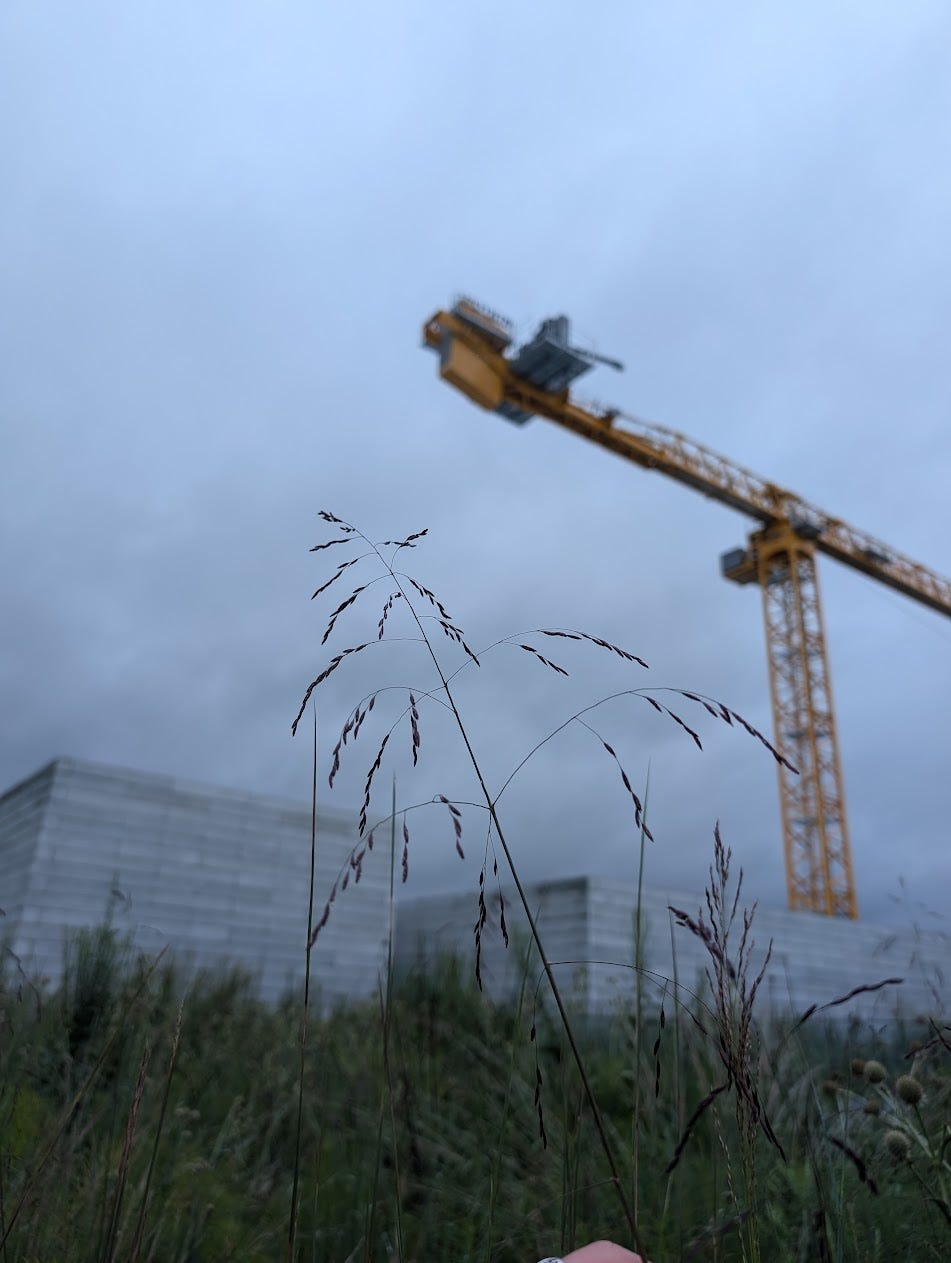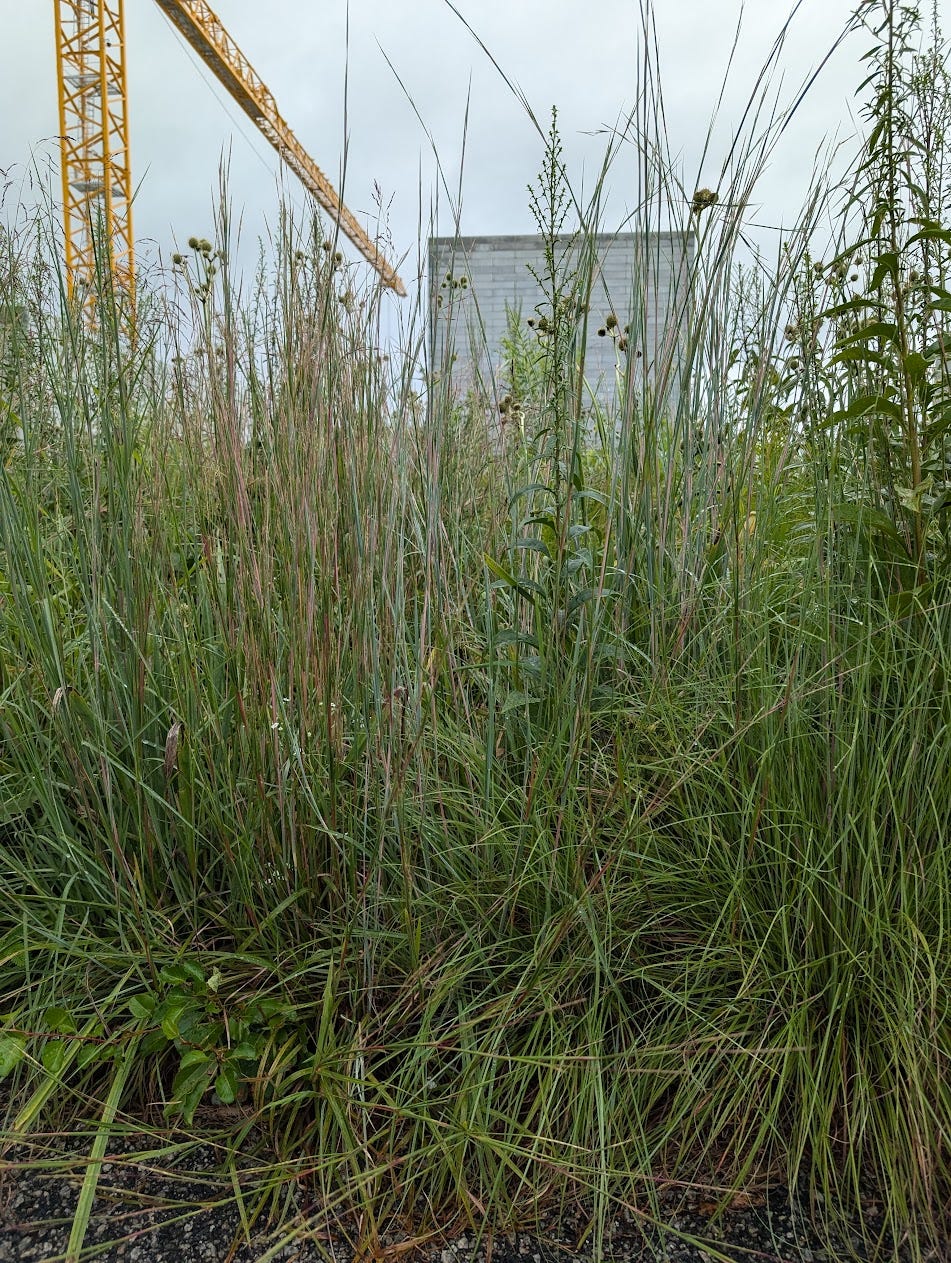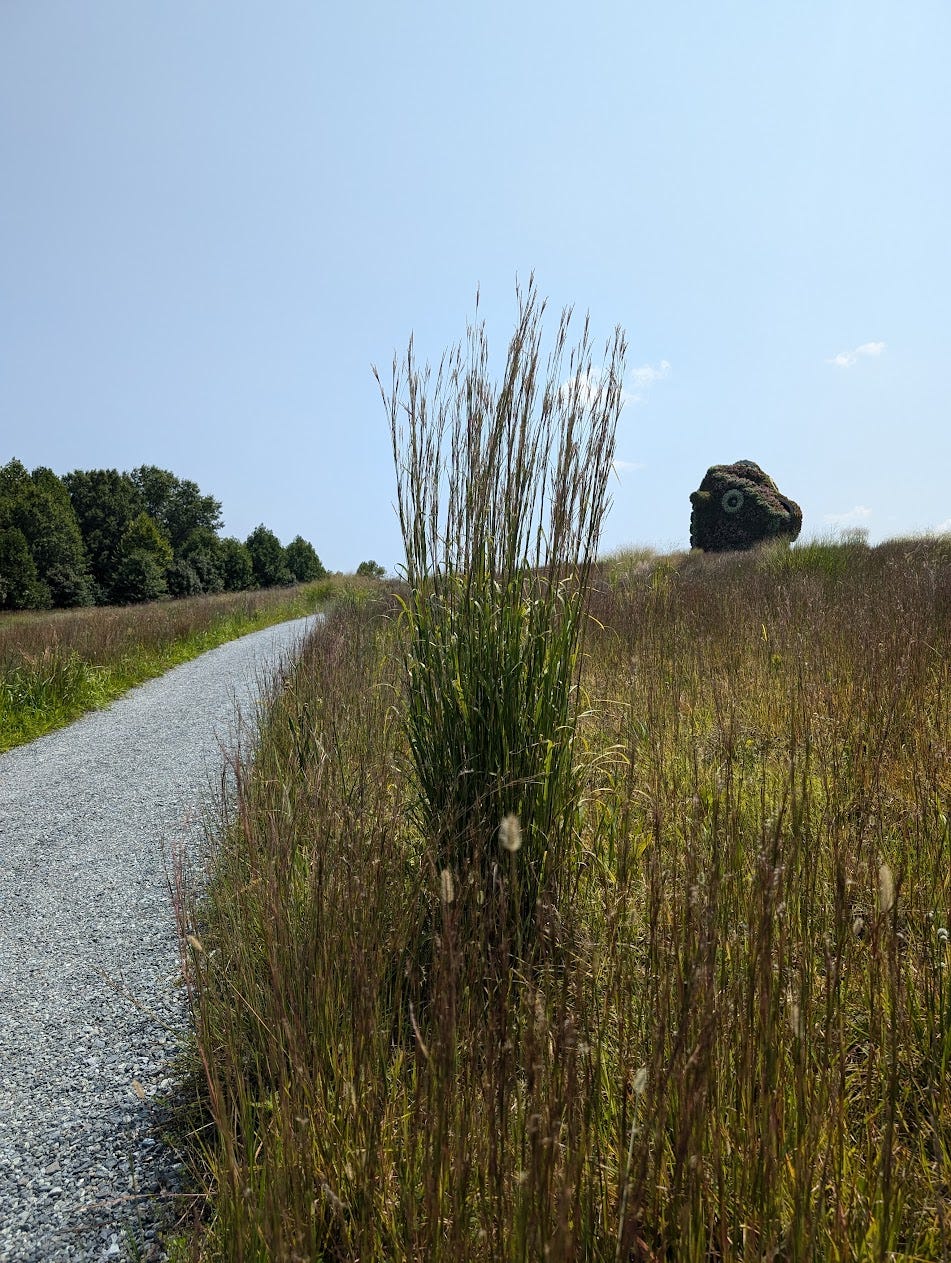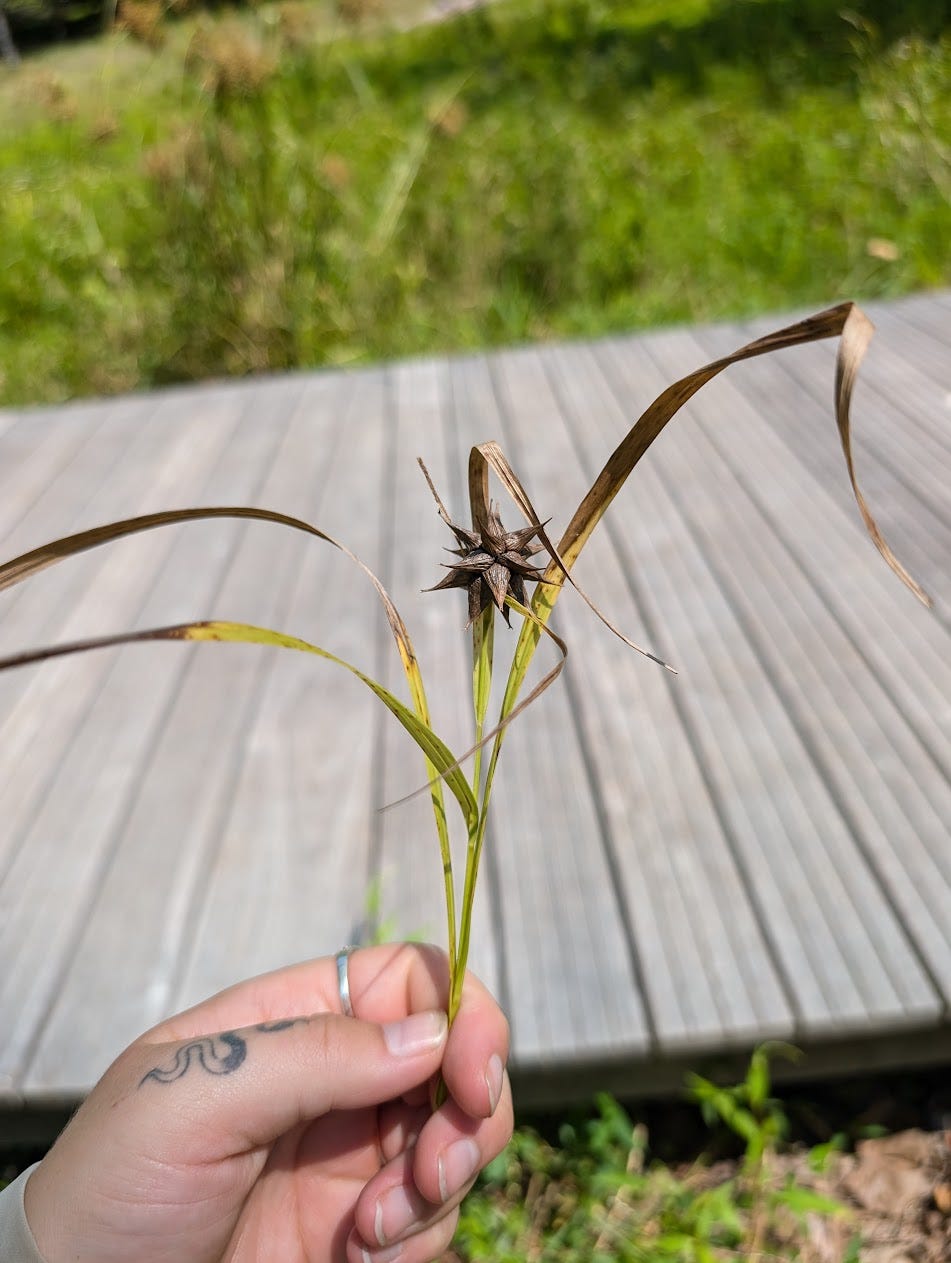What's in Bloom at Glenstone (GRASS & SEDGE EDITION) - 8.15.2024
Hello hello!
This week allow me to introduce you to some of the native grasses and sedges on campus. Although blooming flowers often draw our attention, these plants form the backbone of many of our green spaces and provide texture and visual interest as well!
Purpletop (Tridens flavus) grows to about seven feet tall and is one of the most common grasses in the meadow. Purpletop was part of our original meadowmix, and is a mainstay, along with Little Bluestem. If you look closely at the small purple seed pods, you may spot teensie flowers! Grasses often bloom in the multi branched form seen in the image below; this form is called a "panicle" and can be found in other plants, such as lilacs.
Little Bluestem can be found throughout the meadows, and its silvery-blueish color provides much of the base color to the meadow. Schizachyrium scoparium (say that five times fast!) tends to stay around two to three feet tall for the majority of the season, but can shoot up to five feet while flowering. Although not evident in the photo, Little Bluestem is flowering around campus as well! The flowers appear as small feathery wisps escaping from the tip of the stem.
You might be wondering, does Little Bluestem imply the existence of Big Bluestem? And as a matter of fact, yes! Big Bluestem is one of the taller grasses that can also be found throughout the meadow. Andropogon gerardii also has a telltale blue hue, as well as a three-pronged seed head that some liken to a turkey foot. Both Big and Little Bluestem will turn a coppery brown color in fall.
Panic Grass or Switch Grass is one of the tallest plants in the meadow. Unlike Purpletop and the Bluestems, Panicum virgatum was not part of the seeded meadow mix used on Glenstone because of how dominant it can be. It is a native plant, and is one of the "big four" of American praries and grasslands (Big Bluestem, Little Bluestem, Switchgrass, and Sorghastrum nutans). Because it has seeded itself naturally, you'll find clumps throughout the meadow but it has not overtaken the seeded meadow mix. My favorite view of Panicum is looking out of room 2 in autumn. By this time the grass has turned a tannish-golden color and catches the afternoon light as if someone has painted highlights on each individual leaf.
There are many grasses and sedges to appreciate beyond the meadow as well! Along the woodland trail, lookout for River Oats or Chasmanthium latifolium. The genus is derived from the Greek "chasma" meaning yawn or wide opening (think chasm) and "anthium" meaning flower, referring to the wide and flat arrangement of the seedheads of grasses in this genus, the species name "latifolium" is used in other Latin names and means "broadleaved." As the common name suggests, these plants are often found near flowing bodies of freshwater.
Mace Sedge is the only sedge I have included in this sampler, but I hope it's a memorable one! Sedges and grasses are often similar looking, but sedges can be differentiated by the triangular leaf base (or "sedges have edges"). The seedpods of Carex grayi form a mace-like head that some Pokemon Go fans might recognize as similar to the pokemon Xurkitree (shoutout to Mandy Monson for this comparison!). Mace Sedge has no known combat abilitites, but it is a native plant that does well in wet conditions like swamps and riverbeds.
Florally yours,
Elizabeth Shaw







